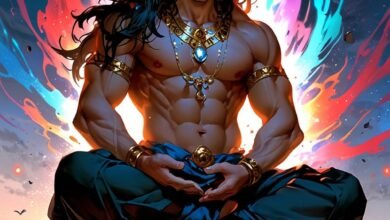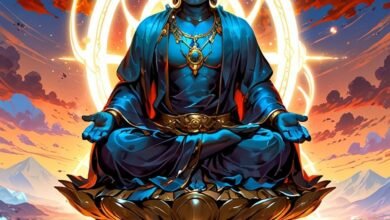The Tragedy Behind Charlie Chaplin’s Comedy – Sadhguru #ranveersingh
Sadhguru: Just every step and every act is hilarious. He decided, instead of sharing this agony with people, he decided at least he’ll make them laugh; somewhere he understands this agony could exist in a whole lot of people. Interviewer (Ranveer Singh): So, Sir you know there’s always… there's like… there’s light-darkness, black-white, yes-no, life-death. There's always… I always find the universe to be in some kind of dichotomy, you know? Sadhguru: In what sense are you calling it as a dichotomy? Interviewer (Ranveer Singh): Like… whatever… like when I have these thoughts, I’m like there's always two things at play, you know? In every… every aspect of life, big-small, there's always an opposite. Is… like can you elaborate on that? Sadhguru: The very way you're characterizing yourself and the question that you are asking itself is a dichotomy. People always thought Charlie Chaplin was very funny. But, if you listen to his private talks and things like that, there was a deep sense of agony in him. Interviewer (Ranveer Singh): He was… he was especially sensitive to the agonies of life. What an artist! Sadhguru: Yes. But, when you see him on the screen, he just made it just so ridiculously funny, hilarious all the time. Everything, every step, every act, not just some act, just every step and every act is hilarious. If you sit watching a Charlie Chaplin movie, you don't laugh at a particular thing. You just laugh at everything. So, because there was such a deep agony, he decided instead of sharing this agony with people, he decided at least he’ll make them laugh and… because somewhere he understands this agony could exist in a whole lot of people, in different measure, of course. So, when we say dichotomy, we’re talking about contradictions. You said light and darkness. Let's take that because that's a very basic; day and night, light and darkness. There are many ways to look at this. One fundamental way is like this – there is light right now. You know there is light right now only because you have seen darkness. Suppose let us say, twenty-four hours of the day, everything, from your childhood, everything was lit, you would not know what is light. So you know light only because in some way you have tasted darkness. You know what is white only because you have seen the black. You know what is a man only because you have seen a woman. You know what's a day only because you’ve seen a night. So, what seems to be contradictory on the logical level of your mind, in terms of making of life, they’re complimentary to each other. They're working with each other, but pretending to be opposite to each other. This is why in this culture, everywhere in the world, not just here, in one way or the other they figured this and they made it in so many ways. They called it “Yin and Yang,” here, we called it “Shiva-Shakti.” And if you see the images of Shiva, one half of him is man, another half of him is woman, physically. Because what is being depicted here is, this is the nature of physical existence, as long as your experience of life is limited to physical. When I say “physical,” right now everything that you can see, has to be physical, isn't it so? Can you see something that's not physical? Can you hear something that's not physical? Can you smell, taste or touch that which is not physical? Or in other words, your entire experience of life is physical. Even your thought and emotion is physical. We can measure it today. We can measure your thought and emotion, that means it’s physical. So your whole experience of life is limited to the physical dimension of the existence and the very nature of physicality can only happen with this. Even if you take the basic electric charges, there is a positive and a negative – without that it will not work. If you take an atom, there are positives and negatives. So the very construction of physical nature is between two opposites or two complementary dimensions of life. So when you live here; if you live here with the necessary perception, in a very brief amount of time one can realize this contradiction or this complementary nature of these two things can go on playing endlessly upon you, without taking you anywhere. When you realize that, that the physical will not get you anywhere, that is when you turn spiritual. It does not mean you have rejected this physical. You're still living in the body, you are still living in this world. It is physical, but this is the longing of every human being. It is not just some spiritual person. Every human being is trying to touch something beyond what they're right now. If you know money, you're just thinking more money. If you know power, you're thinking more power. If you know pleasure, you're thinking more pleasure. If you know love, more love. If you know knowledge, more knowledge. Whatever it is, you are always trying to touch something more. If it finds this longing, to become something more, if it finds a very basic physical expression, we call this sexuality. All you're trying to do is be something more than what you are; something that's not you, you're trying to make it a part of yourself. If it finds an emotional expression, we call this love. Once again, emotionally you're trying to make something that is not you, as a part of yourself. If it finds a mental expression, it gets labelled as greed, ambition, conquest or (Laughs) simply shopping. Something that's not you, you're trying to make it yourself. But if it finds a conscious expression, then we call it yoga. Yoga means union, Yoga doesn't mean twisting and turning. Yoga means union. Why do you have to know union? Because that's the nature of the existence. On the surface it seems contradictory. If you go deep enough, suddenly it is not contradictory.



